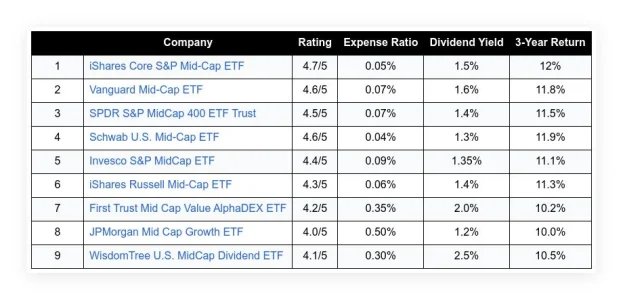Financial management, whether you’re trying to run a business or balance your own accounts, can be intimidating. And it’s only become more complicated in recent years because we use so many different payment modalities. Gone are the days of balancing a checkbook. Instead, many people are tracking funds across multiple P2P platforms and debit and credit cards. It’s a lot to manage, but there are ways to make it easier.
If you want to gain a better understanding of your finances, you need the right tools and strategies. These six systems are perfect for tracking spending habits and helping you take control of your financial future.
Table of Contents
ToggleGet SMART: Understand Your Own Goals
One of the most common mistakes people make when they create a budget is that they don’t set clear, specific, measurable goals. Instead, they set non-specific goals like, “I want to save more” or “I want to spend less on takeout.” Those goals fail the SMART test. Commonly used in business, non-profits, and many other settings, SMART goals are:
S – Specific: The goals describes a particular outcome.
M – Measurable: In terms of budgeting, this means your goal should include a specific amount.
A – Attainable: Set a goal that is within your means. If you set too great of a goal, you’ll inevitably fail and that will discourage you from continuing on your budgeting journey.
R – Realistic: Set a goal that makes sense for your circumstances. Ask how your goal relates to your larger financial or personal aims.
T – Timely: Set a timeframe in which to achieve the goal. This is also part of making your goal measurable. Again, your timeframe should be realistic. If you want to save $100, you shouldn’t aim to do so in a week.
So, what does this look like in practice? A SMART version of “I want to save more” might look like: “By the end of this month, I aim to put $50 in my savings account.” The idea is to name your goal in a clear, quantifiable way so that you can hold yourself accountable to it.
You need to understand how to set these kinds of goals to budget effectively. Failure to set these types of clear goals leads to situations in which you might make a small change, but still feel disappointed in yourself because in your head you were imagining something more.
YNAB: Envelope Budgeting Goes Digital
The envelope method of budgeting is a classic money management strategy that literally involves placing cash into designated envelopes. This keeps you from overspending. At a time when hardly anyone uses cash, and a lot of spending happens online, this isn’t a particularly practical approach. However, it is a system with a proven track record.
You can update the envelope system by using You Need A Budget, an affordable desktop and app-based system that syncs with your bank accounts. YNAB asks you to allocate money each month into digital envelopes. It then subtracts the amounts as appropriate. If you overspend in one area, the system requires you to reallocate funds. You also can’t budget money you don’t have yet, so there’s no counting your chickens before they hatch.
YNAB isn’t free, but most users say the modest cost is worth it in terms of how much it allows them to save and the insight it provides. It’s not quite a “you have to spend money to make money situation,” but think of it as having the right tools for the job. Plus, the company is well regarded for their budgeting advice, and produces high-value blogs and other content to help guide your budgeting journey.
Excel: A Classic Budgeting Strategy
Of all the tools available for setting up a budget, Excel is one of the most traditional. But it’s also one that many people struggle to use. That’s because, while it’s easy enough to enter values into, most people don’t know how to use the automatic calculations and other basic financial functions that make the program so useful. Luckily, it’s not too hard to learn the fundamentals.
If you’d like to use Excel to set up your budget, consider taking an Excel training course that will teach you the basic functions built into the program. The more you can automate key formulas, the easier it will be for you to keep track of your finances in real time. That will save you from performing occasional, laborious updates. Additionally, you can find many different Excel budget templates online since it’s so commonly used for financial management.
In addition to the general automation benefits of using Excel, many people find it to be a useful budgeting tool because it’s compatible with other platforms. For example, you can export files between Excel and Quickbooks. This is more valuable for small business owners than the average individual, but as you gain confidence, you may want to perform more complex financial operations. In that case, the option to export files is valuable.
PocketGuard: Automate Your Budget
Both YNAB and Excel are great budgeting tools, but they have a downside: you need to understand budgeting. And, while having a grasp on your financial responsibilities is a great goal, it’s not always a realistic starting place. Luckily, if you don’t yet feel equipped to set your own budget parameters, you might want to consider using PocketGuard.
Like YNAB, PocketGuard is a budgeting app. But instead of asking you to set out your financial categories and assign funds to them, PocketGuard tracks your spending, assigns it to categories, and then generates a preliminary budget. By creating a budget for you, PocketGuard gives you the tools you need to start practicing financial restraint, understand your spending patterns, and eventually develop a budget of your own that reflects your financial goals, not just your current spending patterns.
Another advantage to PockGuard is that, in addition to automating your basic budget processes, it can help you find lower interest rates or lower-cost services for your bills. And, if you’re out and about, you can check PocketGuard to make sure that you have enough money for a purchase.
Measurements Matter: Know Your Credit Score
Setting a budget is all well and good, but other than preventing you from overspending, a budget is most valuable when it’s associated with specific, measurable goals. People often want to increase their savings, put money away for retirement, or increase their credit score all at once.
If you’ve got your credit rating on your mind, there are several tools that can help you navigate the process. First, you’ll want to look up your current credit score. Keep in mind that the three different credit reporting agencies use slightly different scales. Then, consider signing up for a program like Credit Karma which tracks your credit score and allows you to run credit simulations. The simulations let you develop a strategy for paying down your credit and increasing your credit score as efficiently as possible.
Improving your credit score can take several years. During this time, you’ll want to learn about what behaviors damage your credit and how credit scores are calculated. For example, you don’t want to transfer money back and forth between cards. It’s fine to carry a balance, but you don’t want to carry your cards too close to the limit. That’s because one factor in your credit score is credit utilization, a ratio of how much credit you have to how much you’re actually using.
Debt Management: Don’t Get Overwhelmed
Setting a budget and monitoring your credit are important steps towards long-term financial health and short-term money management. Unfortunately, if you were in debt before you started budgeting, it can be almost impossible to afford even the minimum payment while being able to pay for rent and other bills. This can also make the budgeting process really discouraging. However, there are ways to negotiate the process, specifically with a debt management program.
Debt management programs may seem like a last resort for those in serious trouble, but if you’re having difficulty managing your finances, the sooner you enter debt management, the better. Debt management companies can help you condense your existing debt. This will reduce your total monthly payments and allowing you to pay that fee to a single source.
This process can also protect you from going into collections and even sometimes from incurring late fees. The major downside is that you can’t apply for credit cards during the pay down process or use cards enrolled in the program. For this reason, many people choose to keep one or two cards unenrolled in case of emergency purchases.
Transform Your Finances Today
Money management is not a natural skill, or one that’s taught sufficiently in schools. This leaves many people struggling with their finances as adults, but it doesn’t have to be that way. With the right tools, anyone can gain insight into their current financial status and take control over their circumstances. That’s a powerful thing.















